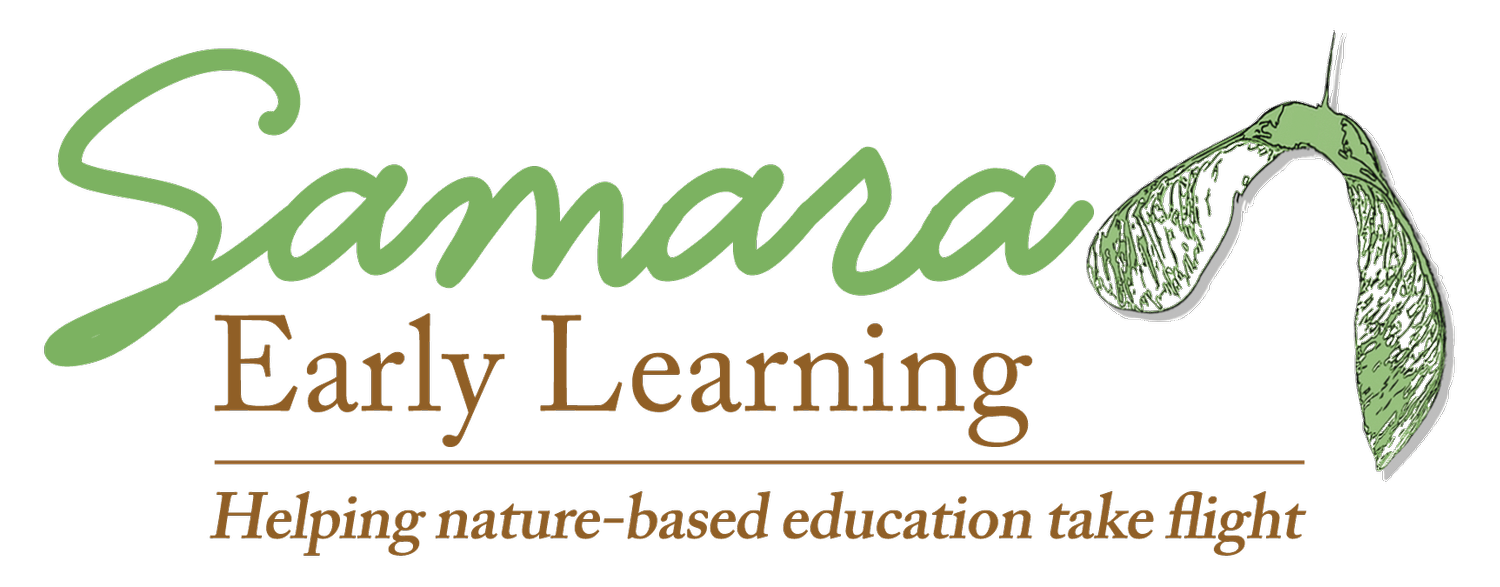Evaluating Natureness: Collection of practices
This post originally appeared in Dr. Rachel A. Larimore’s weekly Samara newsletter on January 30, 2024 and is part 1 of a 3-part series. If you’re interested in receiving these emails, scroll to the bottom of this page to subscribe.
“We rarely leave the play area. Can we call ourselves nature-based?”
“We don’t start our day outside. Are we still nature-based?”
“Our teachers don’t have certifications in nature-based education. Does that mean we’re not nature-based?”
I hear these types of questions often from early childhood educators who are working hard to connect children with nature in as many ways as they can.
My response to these educators? Nature-based education is a collection of practices that prioritize children’s experiences learning with nature.
We all do what we can, where we are by being intentional about our teaching. To accomplish this, we can start by assessing our current nature-based practices.
For example, we could reflect on the following questions in relation to our program goals and curriculum practices:
How do our program documents (e.g., our mission statement, family handbook) talk about the goals of both child development and environmental stewardship?
How do we integrate sustainability practices like compositing, recycling, or rain barrels into our program?
How many of our activities align with the current season in our local environment?
How much time do we spend outside each day?
How often do our activities and interactions develop children’s outdoor skills?
How many of our books represent a diversity of people having positive outdoor experiences?
The answers to these questions are simply information. There’s no need to judge them or “should on yourself” with things like, “Oh, we should be doing more of that.” Instead, we can ask why aren’t we doing that? How might we change our practice to meet our goals?
Take the question of spending time outside, maybe we have a limited number of play spaces and multiple classes so it’s logistically impossible to spend any more time in the outdoor play area than we already do. That’s just reality. Perhaps there is an opportunity to identify a local park to visit to increase our outdoor time. If that’s not possible maybe we find ways to integrate nature into our curriculum indoors in more meaningful ways.
We do what we can where we are. We’re striving for progress not perfection.
To help educators measure quality, my colleagues and I wrote the book Evaluating Natureness: Measuring the Quality of Nature-based Classrooms in Pre-K through 3rd Grade.
Wherever you are on your nature-based journey, I hope you’ll be gentle with yourself and remember that nature-based education is a collection of practices.
There will be trade-offs and some things you’ll be unable to do. The important thing is that you’re being intentional about connecting young children with nature in whatever ways you can given your unique situation.
Keep changing lives,
Rachel
Rachel A. Larimore, Ph.D., Chief Visionary of Samara Learning

